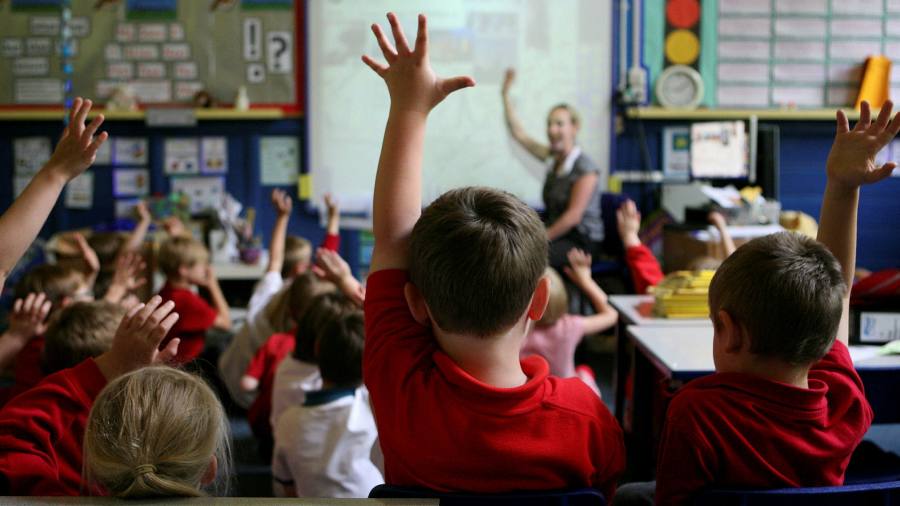[ad_1]
Surging costs mean the government is “no longer on track” to restore England’s school spending per pupil to 2010 levels in real terms by the end of this parliament, a leading think-tank warned on Tuesday.
A study by the Institute for Fiscal Studies estimated that by 2024-25, school spending per pupil in England would be 3 per cent lower than in 2010.
This is because the growth in funding will from next year fall below the pace of expansion in school costs, reducing school budgets’ purchasing power.
The IFS report found that inflation-adjusted school spending per pupil fell 9 per cent between 2009-10 and 2019-20. In last year’s spending review, the government allocated extra funding to schools, saying it would restore spending per pupil to 2010 levels in real terms by the end of the current parliament in 2024-25.
At present, however, spending plans for future years are likely to be insufficient to meet the cost pressures facing schools. As a result, “the government is no longer on track to deliver on this objective”, the report said.
Many factors are adding to the costs that schools face, including increases in pay for teachers and support staff and food and energy prices.
Starting salaries for teachers outside London will from September rise 9 per cent to £28,000, marking a step towards the government’s manifesto commitment of starting salaries of £30,000 by 2022-23. Most teachers, who are at or towards the upper end of pay scales, will at the same time receive salary rises of 5 per cent.
However, with consumer prices rising at a 40-year high of 9.4 per cent and following pay freezes, inflation-adjusted salaries for most teachers will be about 12 per cent lower in real terms this year than in 2010.
Catering and energy will also “weigh extremely heavily” on school budgets, according to the report, as they account for about a quarter of schools’ non-staff costs and are subject to particularly fast price growth rates.
Luke Sibieta, IFS research fellow and author of the report, said the big fiscal choice for policymakers this autumn was “whether or not to provide more funding to public services to compensate for rising costs and the significant challenges they face”.
The report warned that cost increases would not be felt equally, with institutions that rely more on support staff, such as special schools, likely to experience faster growth in costs.
Budget pressures are rising following a period where, because of disruption caused by the coronavirus pandemic, students missed out on learning.
The schools white paper published in March set a target of 90 per cent of primary pupils achieving the expected standard in reading, writing and maths by 2030. But the results of this year’s Sats tests, which are taken by 11-year-olds at the end of primary school, showed that pandemic-related disruption had negatively affected attainment levels.
Ruth Maisey, education programme head at the Nuffield Foundation, a charity, said it was “essential” that the government addressed the cost pressures highlighted by the IFS analysis “to ensure that schools can deliver on ambitions for student attainment”.
The Department for Education said: “We recognise that schools — much like the wider economy — are facing increased costs due the unprecedented recent rise inflation.
“To support schools, budgets will rise by £7 billion by 2024-25, compared with 2021-22, with the total core school budget increasing to £56.8 billion,” it added.
[ad_2]
Image and article originally from www.ft.com. Read the original article here.

